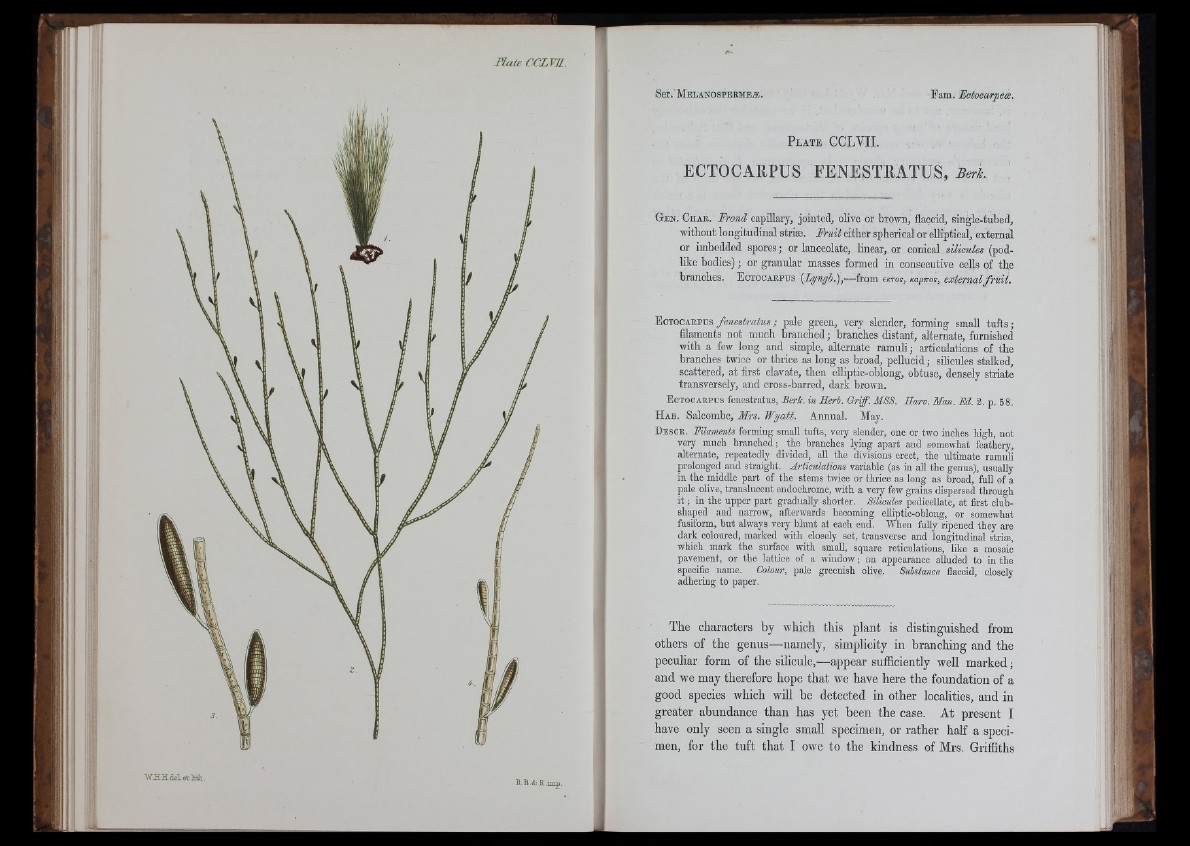
i l : I
! i I
! • '
P l a t e CCLVIL
ECTOCARPUS FENESTRATUS, Berk.
G e n . C h a e . E fo n d capillary, jointed, oKve or brown, flaccid, single-tubed,
without longitudinal striæ. Fru it either spherical or eUiptical, external
or imbedded spores ; or lanceolate, linear, or conical silicules (podlike
bodies) ; or granular masses formed in consecutive ceUs of the
branches. E c t o c a r p u s {Lyngh.),— b om €KTO S , Ka p iTO S y (
E otocawvs fenestratus ; pale green, very slender, forming smaU tufts;
fllaments not much branched ; branches distant, alternate, furnished
with a few long and simple, alternate ramuli; articulations of the
branches twice or thrice as long as broad, pellucid ; silicules stalked,
scattered, at first clavate, then elliptic-oblong, obtuse, densely striate
transversely, and cross-barred, dark brown.
E c t o c a r p u s fenestratus. Berk, in Herb. Griff. MSS. Harv. Man. Fd. 2. p. 58.
H a b . Salcombe, Mrs. Wyatt. Annual. May.
D e s c r . Filaments forming small tufts, very slender, one or two inches high, not
very much branched; the branches lying apart and somewhat feathery,
alternate, repeatedly divided, all the divisions erect, the ultimate ramuli
prolonged and straight. Articulations variable (as in all the genus), usually
in the middle part of the stems twice or thrice as long as broad, full of a
pale olive, translucent endochrome, with a very few grains dispersed through
it ; in the upper part gradually shorter. Silicules pedicellate, at first club-
shaped and narrow, afterwards becoming eUiptic-oblong, or somewhat
fusiform, but always very blunt at each end. When fully ripened they are
dark coloured, marked with closely set, transverse and longitudinal striæ,
which mark the surface with small, square reticulations, like a mosaic
pavement, or the lattice of a window ; an appearance alluded to in the
specific name. Colour, pale greenish olive. Substance flaccid, closely
adhering to paper.
The characters by which this plant is distinguished from
others of the genus—^namely, simplicity in branching and the
peculiar form of the silicule,—appear sufficiently well marked;
and we may therefore hope that we have here the foundation of a
good species which will be detected in other localities, and in
greater abundance than has yet been the case. At present I
have only seen a single small specimen, or rather half a specimen,
for the tuft that I owe to the kindness of Mrs. Griffiths